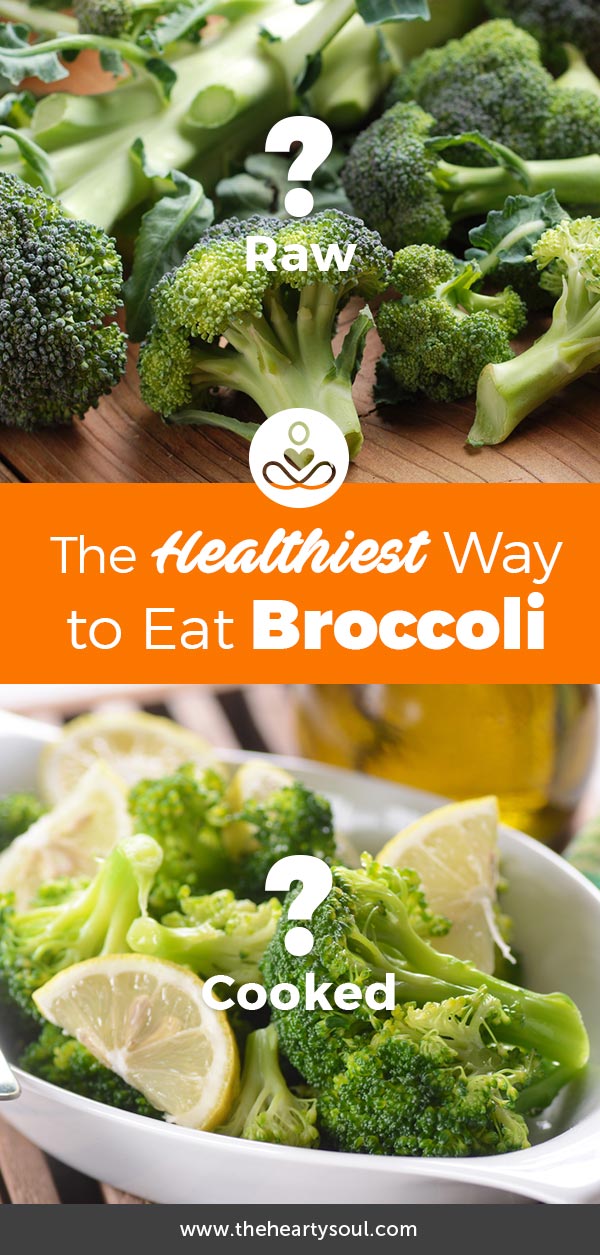If you ask small children and, unfortunately, a few adults, they’ll probably tell you that there is no right way to eat a vegetable. But as we get older, we learn just how important vegetables are to our diet and health so we try and get as much of them as we can. However, are the different ways we prepare vegetables actually preventing us from getting all the nutrients we can? Scientists say the answer is yes! When it comes to preparing broccoli, one way stands tall amongst the rest.
Are You Getting The Most From Your Veggies?

While it’s true that different methods of preparing vegetables can change the nutritional composition of them [1], it’s not always a bad thing. Some methods of preparation can reduce nutritional value, while others can boost it. What’s important is that we use different methods; we can’t always steam our vegetables, even if we think it’s healthier.
One study done on 200 people in Germany [2] found that those that ate a high raw food diet had higher levels of beta carotene, but their plasma lycopene levels were very low. This is most likely due to the fact that raw tomatoes have a lower lycopene level than cooked or processed tomatoes. Cooking has the ability to break down the thick cell walls of plants, releasing their nutrients.
Some water soluble nutrients like vitamin C and B, and nutrients under the group known as polyphenolics are the most vulnerable to cooking and processing. A review done by researchers at the University of California, Davis found that home cooking can lose about fifteen to fifty-five percent of vitamin C [3].
Fat soluble nutrients like vitamins A, D, E, and K, and antioxidants known as carotenoids do much better during cooking a processing. A report published in the Journal of Agriculture and Food Chemistry [4] found that, compared to steaming, frying, or leaving raw, boiling was better for carrots, zucchini, and broccoli.
But could there be a better way to prepare broccoli?
Preparing Broccoli The Right Way

Many people’s go-to method of cooking broccoli was to steam it, (and leaving it with a little bit of crunch left to it). But, according to researchers from the School of Biological and Chemical Engineering, Zhejiang University of Science and Technology, this isn’t the best way to get the most out of your broccoli.
Broccoli is a great source of a nutrient called sulforaphane; some studies have shown that it helps control blood sugar levels [5] and may even have anti-cancer properties [6]. But sulforaphane isn’t readily available in the vegetable. Broccoli contains compounds known as glucosinolates and an enzyme known as myrosinase, which plants have evolved to develop to help defend against predators.
Through what’s known as ‘myrosinase activity’, the glucosinolates get transformed into sulforaphane, which is the nutrient we want. But to create this reaction, the cell walls of the broccoli need to be damaged. But, even though you would think cooking would do the trick, this actually destroyed the myrosinase needed.
So the researchers collected a bunch of broccoli to try and find the best way to get the most sulforaphane, testing for compound levels each step of the way. First, they chopped up the broccoli into two millimeter pieces and split it into three groups: one was left raw, one was stir-fried for four minutes straight after chopping, and the third was chopped and then left alone for 90 minutes before being stir-fried for four minutes as well [1].
The 90 minutes was to see if more of the compound would develop before being lightly cooked.
The researchers found that the broccoli that was cooked immediately after cutting contained 2.8 times less sulforaphane than the broccoli that was left to rest for 90 minutes.
Prepping Your Powered-Up Broccoli
We’ll be the first to admit it, waiting an hour and a half to cook your broccoli is a lot. That’s why meal prepping is so important. Next time you bring some fresh broccoli home, take the time to chop it up (a food processor makes this super easy), and let it sit for the requisite time. Once the broccoli has had the time to do its thing, you can store it and freeze it. Freezing will lock in the nutrients, so their levels are high when you’re ready to use it.
If you’re looking for some ways to cook your prepped broccoli, here are some ideas you can use. Remember, since the pieces are so small, they’ll need very little time to cook and you’ll be able to get almost all of its nutrients with no waste.
- Mix into stir-fry rice
- Toss into freshly made pasta with some olive oil, salt, and pepper
- Add some to your next batch of cauliflower rice for a colorful side dish.
- Fold into warm mashed potatoes, regular or sweet
Get the most out of your produce by cooking them the best way possible!

Sources
- https://well.blogs.nytimes.com/2013/10/18/ask-well-does-boiling-or-baking-vegetables-destroy-their-vitamins/
- https://www.ncbi.nlm.nih.gov/pubmed/18028575
- https://pubs.acs.org/doi/abs/10.1021/jf072304b
- https://www.sciencealert.com/broccoli-could-be-a-secret-weapon-against-diabetes-say-scientists
- https://www.sciencealert.com/broccoli-pills-could-help-fight-existing-cancers-health-experts-say
- Image Source: https://www.sciencealert.com/images/2018-02/processed/pulverised_broccoli_1024.jpg
